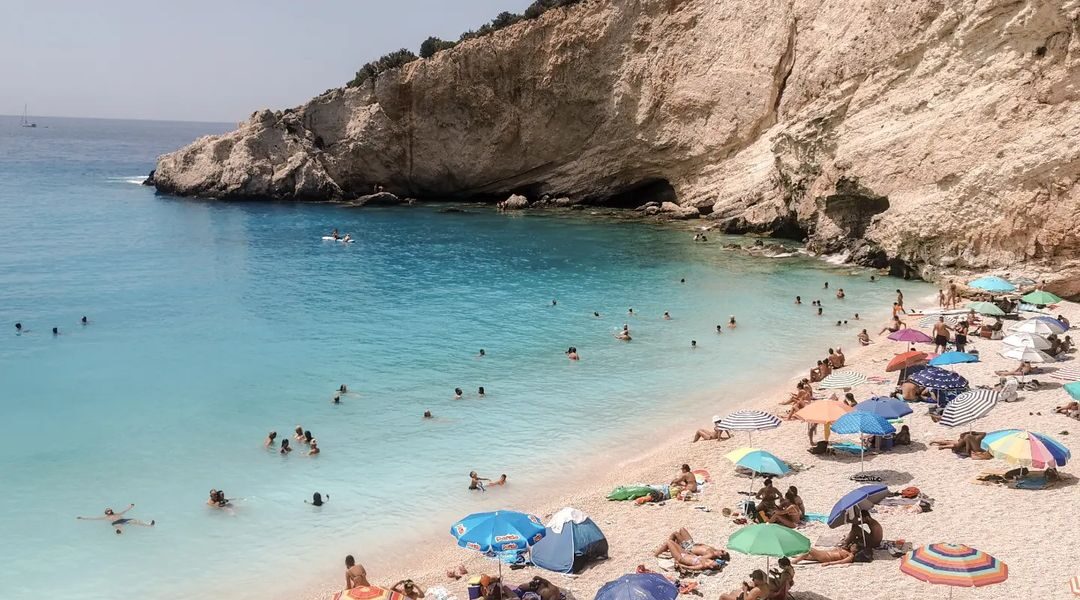While Lefkada is easily accessible, it is linked to the Greek mainland via a small bridge, it remains one of the Ionian’s most unspoiled destinations. A haven for many Greek and international tourists, Lefkada’s beaches are simply glorious.
Its main town is sophisticated and then there are the vibrant coastal towns of Nydri and Agios Nikitas, plus plenty of small sleepy villages where life remains unchanged. Lefkada town is a great base and a wonderful place to explore, there are many pretty churches to uncover and then there is the ‘shabby chic’ appeal of the unusual but colourful corrugated-iron building style (a legacy of the earthquakes that have plagued the region for centuries).
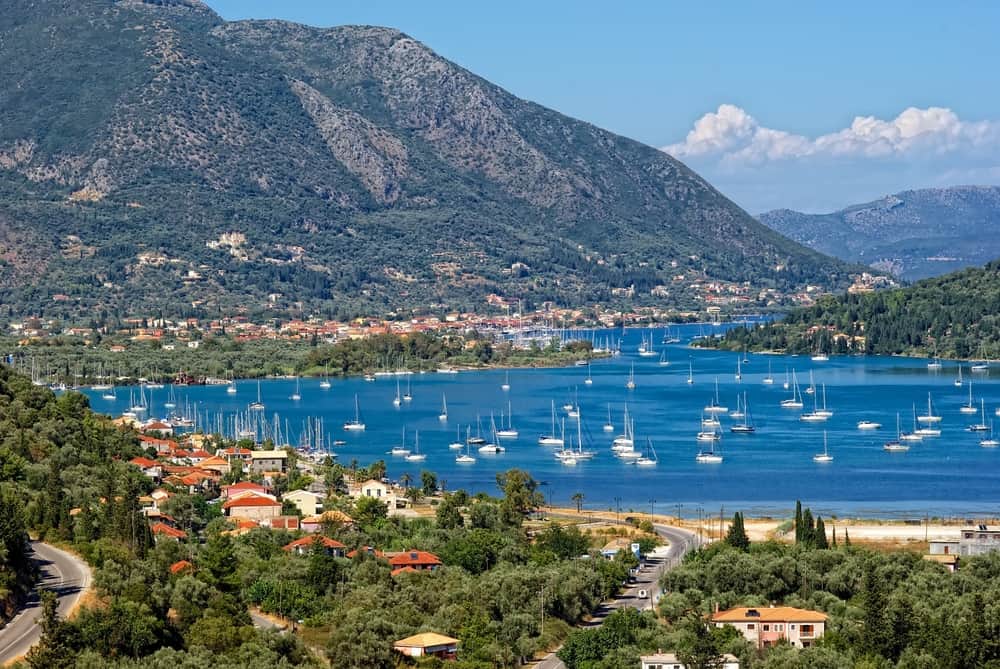
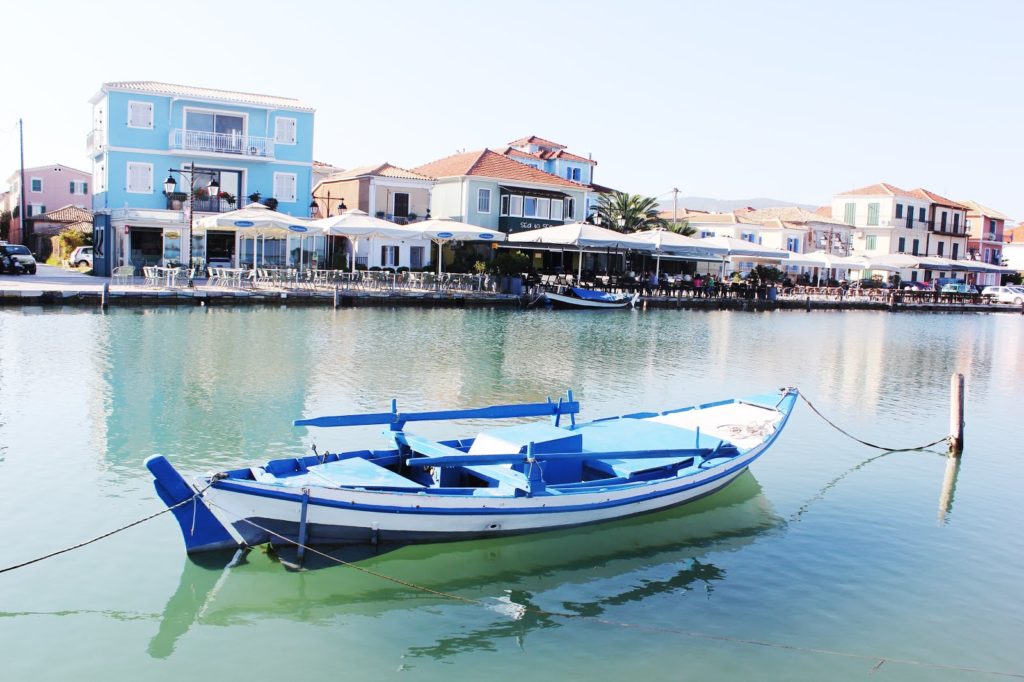

Bus: there are usually four buses per day from Athens to Lefkada, each taking around 5&1/2 -6 hours. You can now reserve tickets online and the cost per ticket is around 30-40 euros: www.ktel-lefkadas.gr
Plane: a number of low-cost airlines fly from the UK and other European destinations, particularly Italy, to Preveza airport, on the Greek mainland. Within Greece, small airline Sky Express offers a limited number of flights between neighboring islands Kefalonia and Zakynthos, as well as from Crete. From Preveza airport, you can either take a taxi from outside the terminal building or hop on one of the buses that pass by on the main road. There are roughly six buses on weekdays and two on a Sunday: www.skyexpress.gr
Ferry: there are some limited ferries between Kefalonia (Fiskardo) and Lefkada (Nydri). Vassiliki, on the south coast of Lefkada, can also be reached by ferry from Kefalonia and Ithaca: www.gtp.gr

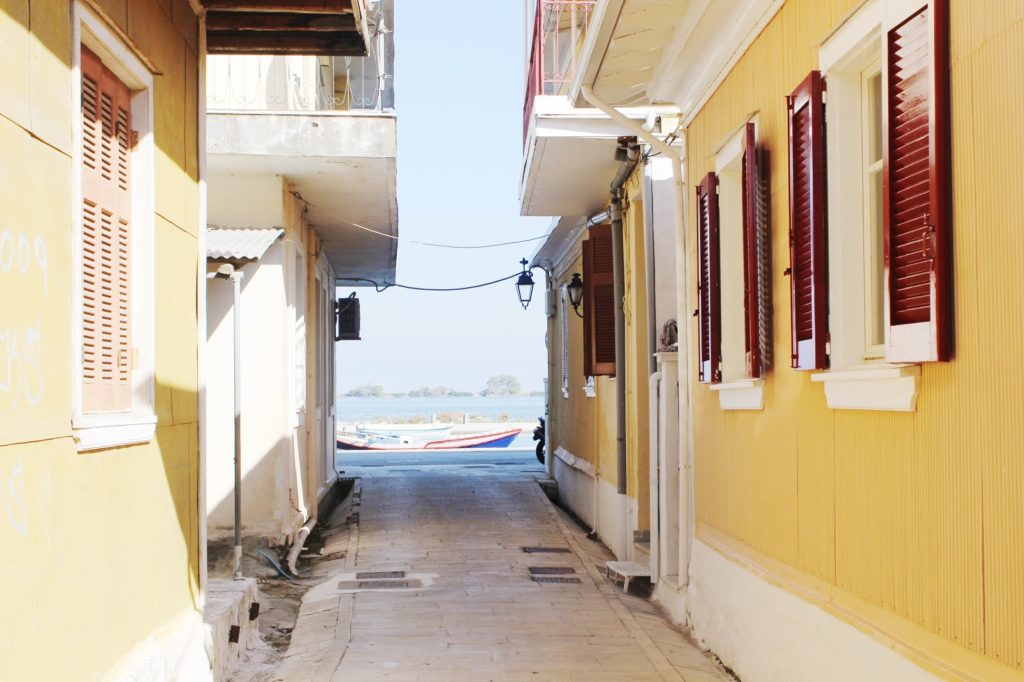

Checking in
The island is very easy to get around by car and the historic center of Lefkada makes a wonderful base. After a day spent exploring the islands spectacular beaches, by night you can meander along the vibrant laneways of the old town which are filled with cafés, tavernas, and restaurants.
The Aigli: Set in the historic centre of Lefkada, the Aigli is housed in a restored heritage building, originally built in 1800. The boutique hotel has a gorgeous garden and outdoor bar: www.theaigli.gr
Ziv & Tonic: Ziv&Tonic apartments, are located next to the central square of old historic Lefkas town on a quiet street, 2 min. walk from the sea. The traditional stone buildings have been beautifully renovated and have a great range of amenities. Perfect if you want to explore the islands amazing produce and have fun with a little self-catering: www.zivtonic.com
San Nicolas Resort: At the more lux end of the scale and at the other end of the island from Lefkada town is the San Nicolas Resort. Perched above Mikros Gialos beach, the San Nicolas is a boutique hotel with contemporary style and a 25-meter horizon style pool. San Nicolas Resort is open seasonally, May through October: www. sannicolas.gr
How to get around
Public transport on the island consists of a few buses from Lefkada town to Nydri and Vlyho, Poros and Vassiliki. There are regular buses to Agios Nikitas. Other villages are served by one or two buses daily. If you want to make the most of your visit, hiring a car is your best bet.
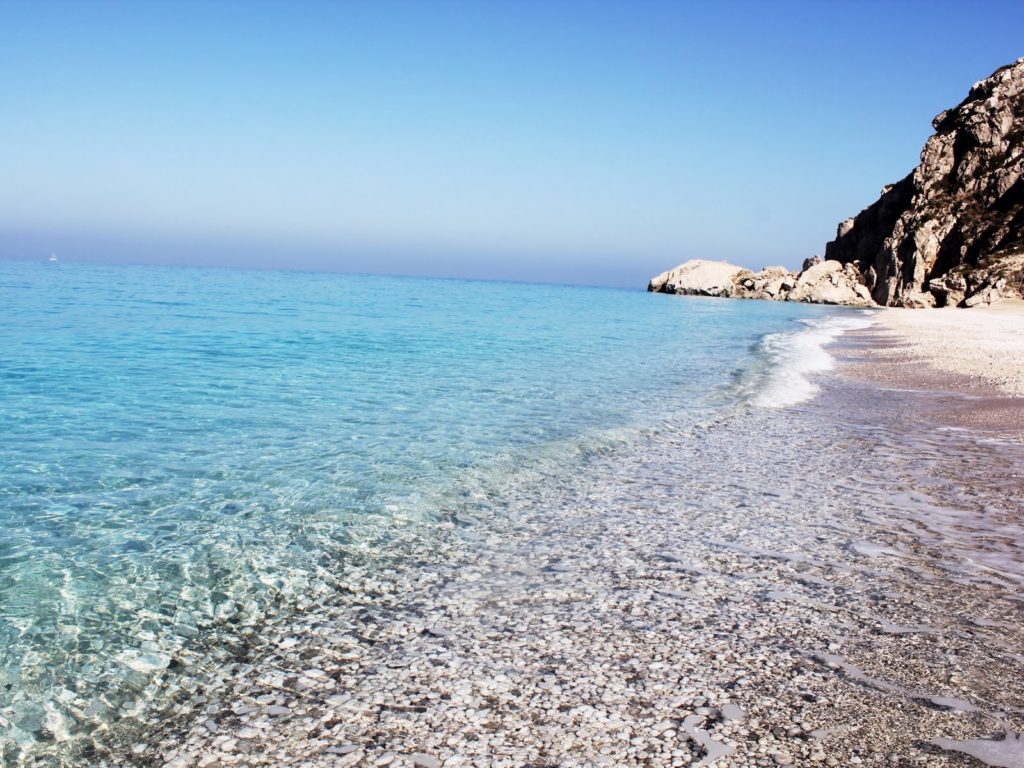

What to see
The beaches: are the islands best assets. Seek out the stunning Porto Katsiki, which is dramatic and requires around 100 steps but rewards you with a turquoise sea against sheer white cliffs. There is the family-friendly Agios Nikitas. Milos beach is also accessible by boat from Agios Nikitas. Don’t miss the long white stretch of beautiful Kathisma.
Chanel your inner shipping tycoon: and take a boat trip from Nydri to visit Skorpios, the private island where Jacqueline Kennedy married Greek shipping tycoon Aristotle Onassis in 1968.
Visit the coastal village Agios Nikitas: a gorgeous fishing village filled with tightly-packed bars and tavernas, it has the feel of a tiny slice of Mykonos with its whitewashed alleyway that leads to a stunning pebble beach. Don’t be put off by the initial first impression of a large car park – it gets better!
Take a volta around Platia Agios Spyridon: the beautiful square in the heart of Lefkada Town, a hive of local activity and home to the island’s annual summer arts festival.
Visit the village of Karya: the main square is shaded by enormous plane trees and filled to the brim with chattering diners at several tavernas. Keep an eye out of the textile shops, which are home to a special type of embroidery called “Karsaniki” for which this village is renowned.
Roam in the home of Odysseus: take a boat trip from Nydri to the neighbouring island of Ithaca for the day.
Spend time in the vines: at the Lefkas Earth winery: www.lefkaditikigi.gr
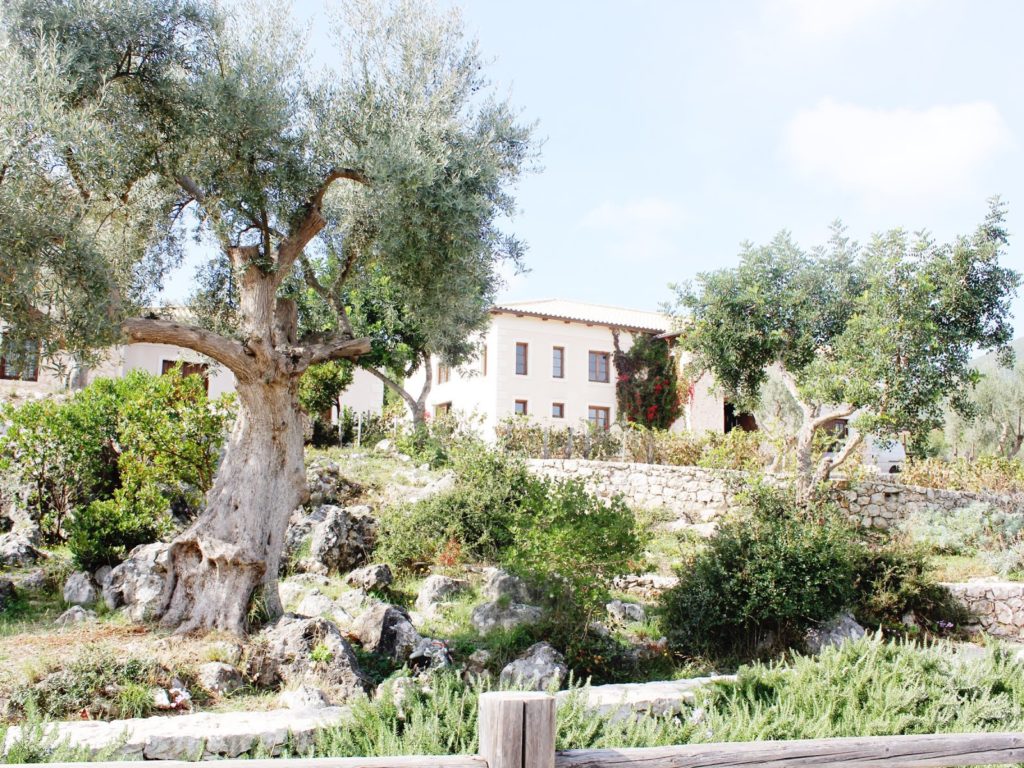
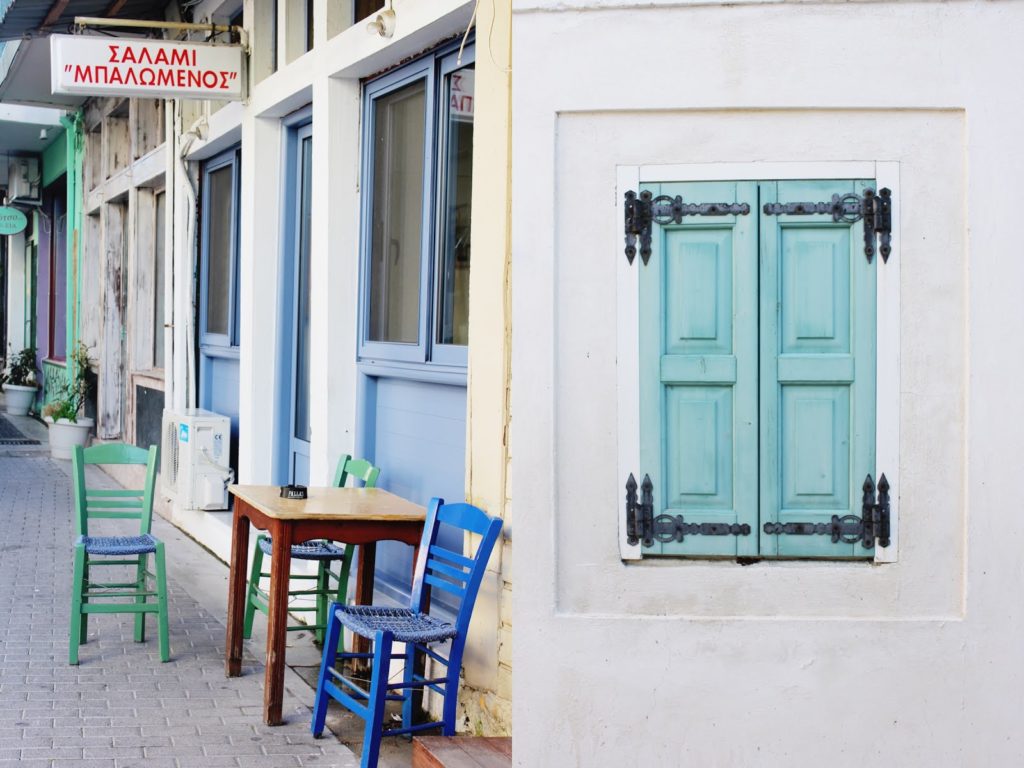
Honey: try one of the stunning amber coloured thyme honey from one of the many roadside vendors across the island.
Lentils: a specialty of Lefkada, try a traditional dish of Eglouvis lentils, or take some to use at home. In Lefkada, these special lentils are cooked with garlic and oregano to a thick creamy consistency.
Salami: One of the most traditional local products, Lefkada’s salami is reputed to have an Italian “origin”, specifically the people of Burano, Italy, who came to settle on the island.
Fish dishes: savoro (red mullet in a rosemary marinade) and aliada (the Ionian name for ‘skordalia’ served with fried salt cod). The island also has excellent quality avgotaraho (dried fish roe) but is produced in small quantities.
Sweets: nougat mandolata and pasteli (a sweet of honey and sesame)
Wine: There are lots of wine stores in Lefkada, including a very charming old school store where you can buy local wine direct from the barrel. Wine is also available at the rural cooperative Τ.Α.Ο.Λ in Lefkas town. Varieties to look out for include: Vertzami and Vardea. The red grape, Vertzami is cultivated solely in the island of Lefkada and it produces an intensely coloured wine.
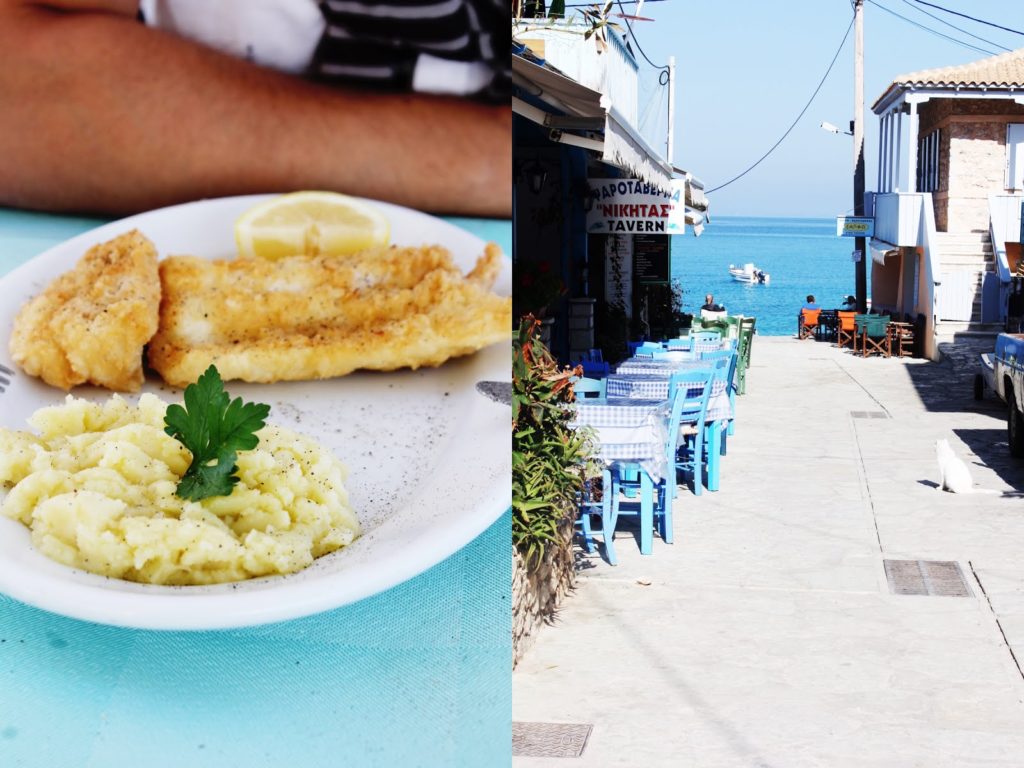

Where to Eat (and shop)
Minas’ tavern, Nikiana: this family-run tavern sits above the scenic seaside village of Nikiana and specialises in fresh fish. The traditional fish soup and marinated anchovies come highly recommended: www.tavernaminas.gr
Ionian Taverna, harbour front Niydri: This cute little taverna is family run and offers homestyle cooking – just like from yiayia’s kitchen. Cheap and cheerful Greek family classics.
Taloni, Chortata village: all of the taverna’s produce from potatoes to roosters and rabbits are home raised from their own farm. Traditional home-style cooking, not to be missed: www.t-aloni.gr.
Margarita, Lefkada: a popular restaurant frequent by locals as well as tourists. The tavern also is one of the few places that run out of tourist season.
Maria’s Taverna, Kolivata: off the beaten track, Kiria Maria opens the terrace of her home, surrounded by trees and gardens to serve her own organic, seasonal produce.
Agios Nikitas: there are a number of tavernas to choose from and they share a similar menu of grilled sardines, salads and more.
T’agnantio comes highly recommended for fresh seafood and a chilled atmosphere, with sea views.
Karya: this lovely traditional village is home to several tavernas and Karaboulias is a great choice, located in Karia’s main square.
Galaktopolieos (traditional dairy bars): there are a number of traditional dairy shops in the centre of Lefkada town. Stop by for a mid-morning sheep milk yoghurt with honey, served in a traditional terracotta tub or choose a more indulgent afternoon snack of krema or rizogalo.
Fishmongers & Grocers: Lefkada town is also home to a number of open front fishmongers, where the catch of the day sits on chilled slabs of marble for you to inspect. The seafood was of an incredibly high quality and so fresh, the calamari would blush and change colour before your eyes after a gentle prod from this fishmonger. The street grocers also have a great range of high quality, fresh fruits, and vegetables including generous crates of just picked wild greens.
Delimaris Salami: visit a branch of this family-run store to try one of the island’s famous salami. The Delimaris family have been making traditional salami since 1964.
Produce market (laiki agora): a small local produce market runs every Saturday morning opposite the Town Hall in Lefkada Town.
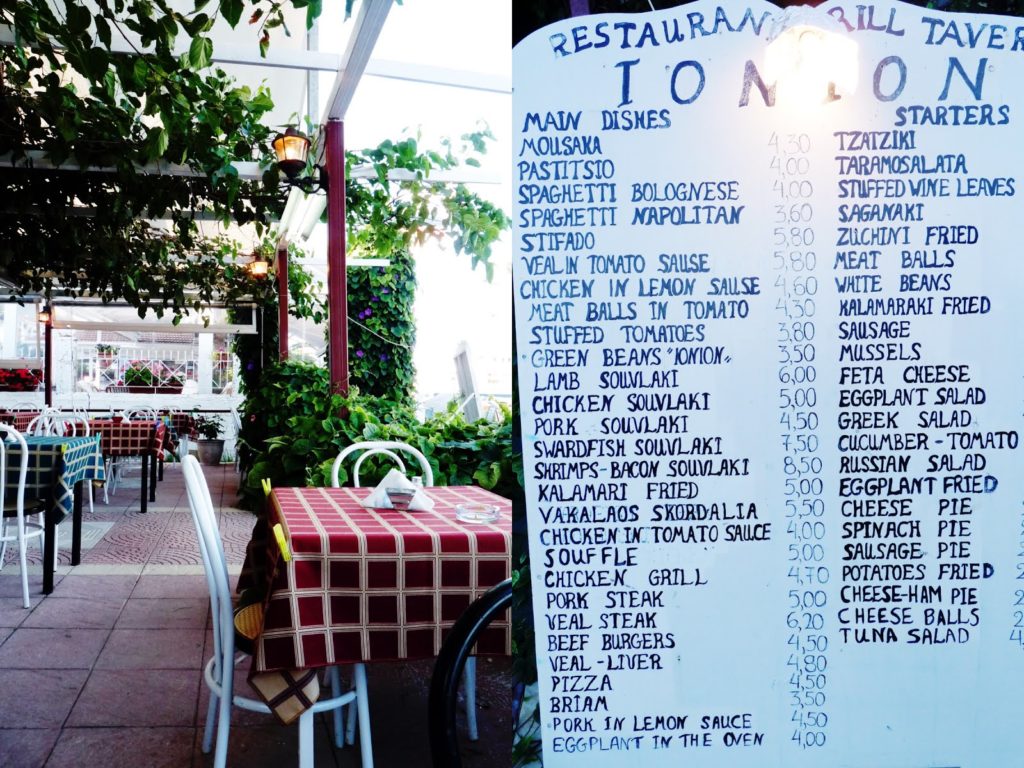
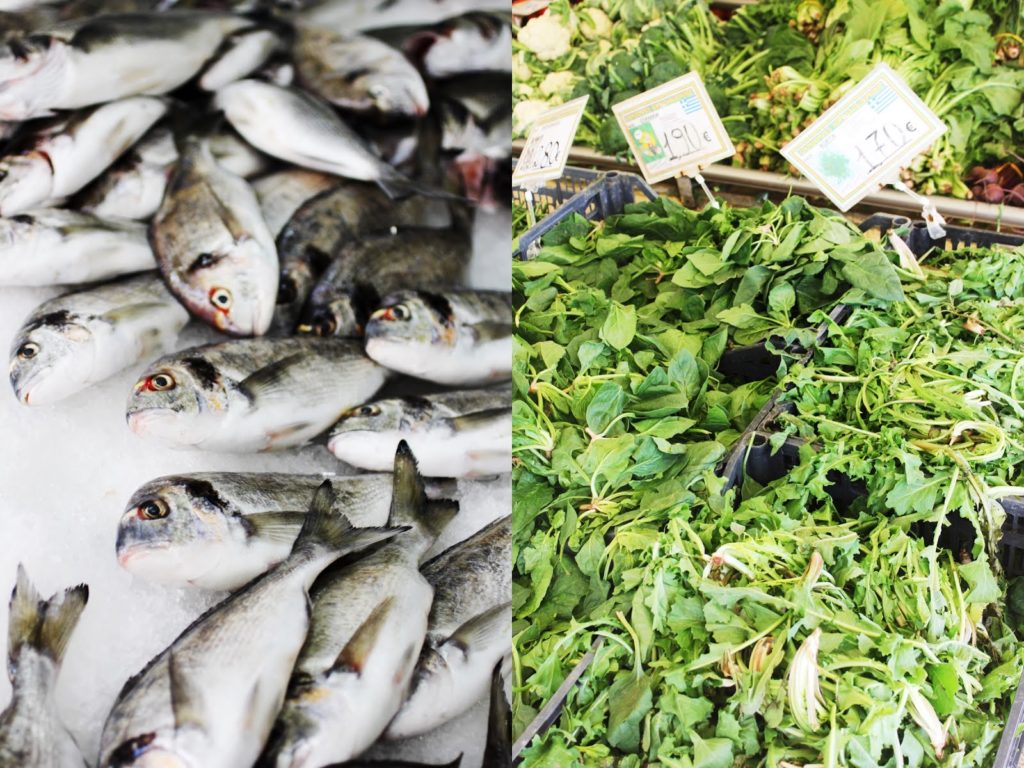
*This article first appeared at mulberrypomegranate.blogspot.com.au
*All images by Katrina Kallos (Copyright)

